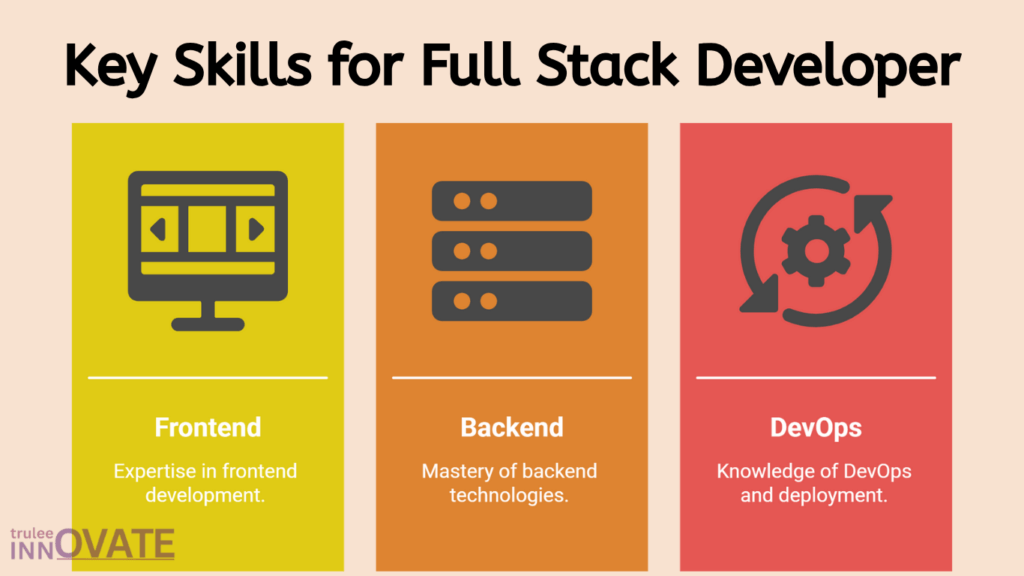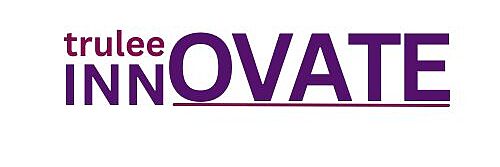Introduction
Your project’s success or failure depends on your development team in today’s digital-first environment. Your idea can become a reality by bridging the gap between server architecture and user experience with the hiring of full stack developer. From establishing your criteria to submitting the final offer, this guide will go over every step you need to do in order to effectively employ a full stack developer in 2025.You can find useful information here whether you run a big company or a small startup.
What is a Full Stack Developer?
A full stack developer is more than just a coder—they’re a versatile professional with expertise in both the user-facing side (frontend) and the server-side infrastructure (backend). On the frontend, they craft engaging interfaces using HTML, CSS, and JavaScript frameworks. On the backend, they build APIs, manage databases, and ensure security and scalability. Think of them as the architects and builders of web applications, capable of seeing the big picture and handling every layer of development.
Why Hire Full Stack Developer in 2025?
Hiring a full stack developer today delivers several strategic advantages:
- Accelerated Time-to-Market: With one person handling multiple layers, there’s less waiting for handoffs, so features go live faster.
- Enhanced Collaboration: A full stack developer speaks the language of both designers and engineers, reducing misunderstandings and rework.
- Cost Efficiency: Instead of hiring separate frontend and backend specialists, you get dual expertise under one salary.
- Scalability & Maintenance: Their holistic view ensures code is modular and maintainable, making future updates cleaner and quicker.
By 2025, businesses that leverage full stack talent will have a clear competitive edge, staying nimble and responsive to customer feedback.
Key Skills to Look for in a Full Stack Developer
A great full stack developer brings a balanced skill set. Here’s what to prioritize:
4.1 Frontend Expertise
- Modern Frameworks: React, Angular, or Vue.js. Look for experience building dynamic, component-based UIs.
- Responsive Design: Understanding of flexbox, CSS grid, and mobile-first design principles.
- Accessibility: Knowledge of ARIA standards, semantic HTML, and ensuring applications are usable for all.
- Performance Optimization: Techniques like lazy loading, code splitting, and minimizing render-blocking resources.
4.2 Backend Mastery
- Server-Side Languages: Proficiency in Node.js, Python (Django/Flask), Ruby on Rails, Java (Spring), or PHP (Laravel).
- API Development: Strong grasp of RESTful design, GraphQL schemas, and handling authentication/authorization.
- Database Management: Experience with SQL (MySQL, PostgreSQL) and NoSQL (MongoDB, Redis) systems, including schema design and query optimization.
- Security & Testing: Implementing OAuth, JWT, encryption, and writing unit/integration tests.
4.3 DevOps & Deployment Know-How
- CI/CD Pipelines: Familiarity with Jenkins, GitHub Actions, or GitLab CI to automate builds, tests, and deployments.
- Cloud Platforms: AWS, Google Cloud, Azure—know how to configure servers, storage, and serverless functions.
- Containerization: Docker and Kubernetes basics for scalable container orchestration.
- Monitoring & Logging: Tools like Prometheus, Grafana, or ELK stack to track application health.
Beyond technical prowess, look for soft skills: clear communication, adaptability, strong problem-solving, and a collaborative mindset.

Frontend vs Backend vs Full Stack: What’s the Difference?
| Role | Focus Area | Typical Technologies |
|---|---|---|
| Frontend | User Interface & Experience | HTML, CSS, JavaScript, React |
| Backend | Server Logic & Database | Node.js, Python, Java, SQL |
| Full Stack | Both Frontend & Backend, plus DevOps | All of the above + DevOps |
Full stack developers sit at the crossroads, blending UI finesse with robust server-side engineering. They’re invaluable when you need rapid prototyping and versatile development.
When Does Your Business Need a Full Stack Developer?
Consider bringing on a full stack developer if you:
- Are Building an MVP: Quick iterations require someone who can pivot across layers.
- Run an Agile Team: Minimize dependencies and maximize velocity.
- Operate on a Startup Budget: One versatile hire beats multiple specialists on cost.
- Need End-to-End Ownership: From wireframes to deployment, one person can own the lifecycle.
Even large organizations benefit—full stack developers often act as liaisons, guiding specialized teams and ensuring consistency across projects.
Where to Find the Right Talent to hire full-stack developer
Finding a skilled full stack developer means tapping into diverse channels:
- Freelance Platforms: Upwork and Toptal offer vetted talent for short-term or project-based needs.
- Developer Communities: Platforms like GitHub and Stack Overflow showcase active contributors and open-source work.
- Tech Meetups & Conferences: Local events and hackathons can reveal passionate coders ready for new challenges.
- Recruitment Agencies: Specialized tech agencies (e.g., truleeinnovate.com) maintain pools of pre-screened full stack developers.
- University Programs & Bootcamps: Emerging talent from coding bootcamps or university computer science departments.
Mix and match channels to curate a pipeline of candidates, then refine through targeted assessments.
How to Structure Your Hiring Process
A robust process uncovers both skill and culture fit.
- Define Clear Requirements: Write a detailed job description highlighting must-have skills, nice-to-have technologies, and your development environment.
- Initial Screening: Use brief phone or video calls to assess communication, availability, and basic cultural alignment.
- Technical Assessment: Assign a real-world code challenge covering frontend, backend, and DevOps. Allow 48–72 hours.
- Live Coding Session: Conduct a 45- to 60-minute session where candidates think aloud while solving a problem. Evaluate problem-solving approach and communication.
- Portfolio Review: Ask candidates to walk through 2–3 of their best projects. Focus on architectural decisions and lessons learned.
- Final Interview: Involve key stakeholders to discuss team fit, growth potential, and career aspirations.
- Reference Checks: : Ask former coworkers or employers to confirm prior performance.
- Offer & Onboarding: Present a compelling package and outline a clear onboarding plan to get them productive quickly.
Must-Ask Interview Questions
- Full Stack Journey: “Can you describe a project where you owned both frontend and backend development?”
- Tech Choices: “Why did you choose [X technology] over alternatives?”
- Performance Tuning: “How have you optimized a slow query or page load?”
- Error Handling: “Walk me through how you diagnose and fix a production bug.”
- DevOps Collaboration: “What’s your experience setting up CI/CD pipelines?”
- Future Growth: “Which new technologies are you excited to learn?”
These questions gauge depth of knowledge and cultural fit.
Code Challenges That Actually Work
Effective challenges mirror your real work:
- Mini E-commerce App: Build a basic storefront with product listing (frontend) and order API (backend).
- Third-Party API Integration: Consume a public API (e.g., GitHub or Stripe) and display processed data.
- User Authentication Module: Implement signup, login, JWT-based sessions, and role-based access control.
Provide clear requirements and scoring criteria. Offer feedback afterward—this reflects well on your employer brand.
Evaluating Portfolios & Past Projects
When reviewing work:
- Tech Stack Diversity: Have they used multiple languages or frameworks?
- Project Complexity: Were these solo or team efforts? Scope and scale?
- Innovation & Creativity: Did they build custom solutions or rely solely on existing libraries?
- Problem-Solving Artifacts: Look for write-ups, blog posts, or documentation explaining their decisions.
A well-documented portfolio shows not only skill but dedication to craft.
Understanding Compensation Expectations
Full stack developers command competitive rates—reflect this in your offers:
- Base Salary: Research local benchmarks (Glassdoor, Payscale) and adjust for experience.
- Benefits: Health insurance, retirement contributions, and wellness stipends.
- Equity & Bonuses: Stock options or performance-based incentives.
- Professional Development: Training budgets, conference allowances, and certifications.
- Work-Life Balance: Flexible hours, remote work options, and generous PTO.
A transparent, total-compensation approach builds trust and attracts top talent.
Remote vs On-Site: What’s Best for You?
Remote Advantages:
- Access to global talent
- Reduced overhead costs
- Improved work-life balance for employees
On-Site Benefits:
- Face-to-face collaboration
- Easier mentorship and team bonding
- Access to on-premise resources
To get the best of both worlds, think about using a hybrid model. At Truleeinnovate, we advise clients on optimal setups based on project complexity and company culture.
How truleeinnovate Can Help You Hire Full Stack Developer
Choosing Truleeinnovate gives you:
- Curated Talent Pools: We match you with developers pre-screened for skills and culture fit.
- Flexible Engagement: Full-time, part-time, contract-to-hire—you decide.
- Dedicated Support: From initial screening to post-hire check-ins.
- Guaranteed Quality: Our 30-day replacement policy ensures you get the right fit.
Partner with us to streamline your hiring and focus on building great products. Explore plans and success stories at truleeinnovate.com.
Conclusion
Finding and hiring a top-notch full stack developer in 2025 requires foresight, structure, and a commitment to total compensation. By following this comprehensive guide and leveraging TruLeeInnovate’s expertise, you’ll secure talent that drives innovation, speeds up delivery, and elevates your products.
FAQ’s
1. How long does it take to hire a full stack developer through Truleeinnovate?
Typically 7–10 days from the initial consultation to offer acceptance, depending on role complexity.
2. What distinguishes a full stack developer from a backend or frontend specialist?
A full stack developer handles both client-side interfaces and server-side logic, plus DevOps practices.
3. Can I hire remote developers from different time zones?
Absolutely. Truleeinnovate specializes in global talent with overlap hours to suit your team.
4. What if my first hire isn’t the right fit?
Our 30-day replacement policy ensures you only pay for talent that stays on the job.
5. Do you offer trial periods or pilot projects?
Yes. We recommend a short pilot assignment to evaluate real-world performance before committing long-term.


